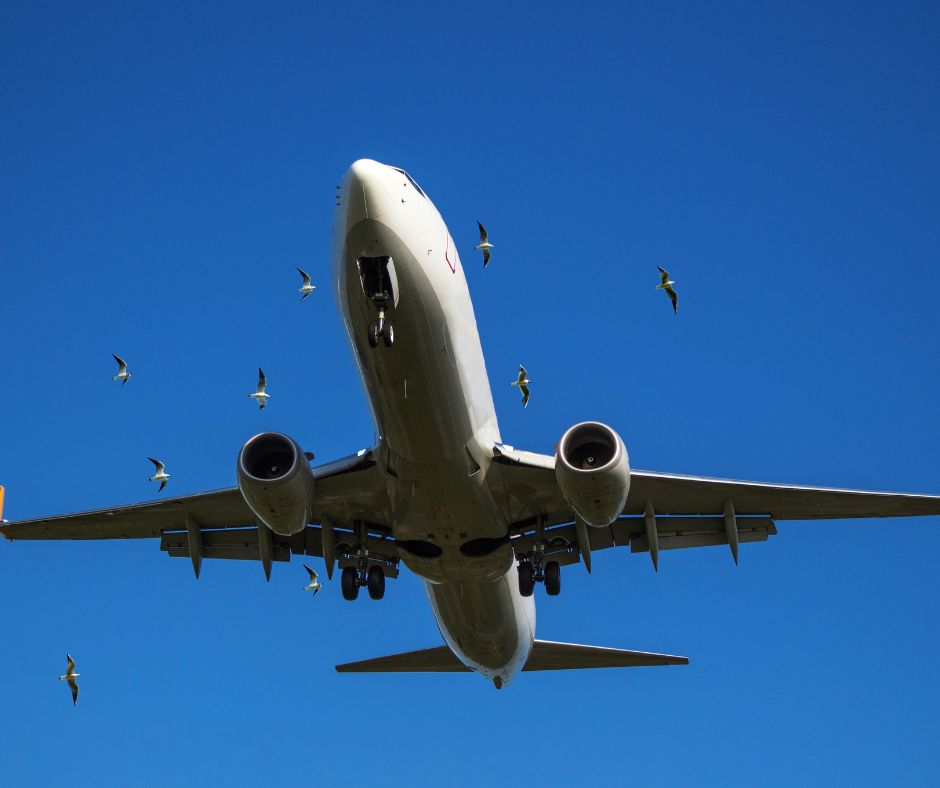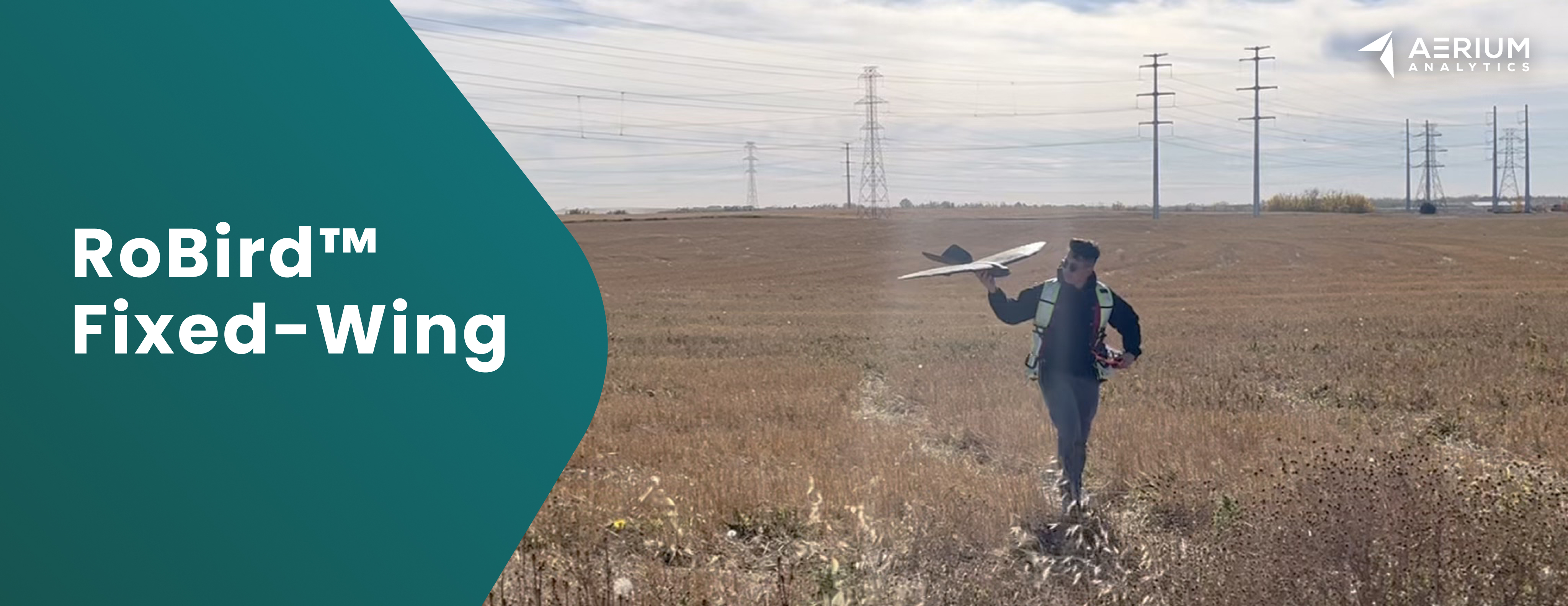
Top 3 challenges with wildlife mitigation at airports
While there is no question that the COVID-19 pandemic significantly disrupted the airline industry (among others), there is also no question that prior to that disruption the industry has been growing by leaps and bounds in recent decades. Since the establishment of the world’s first airport – Washington DC’s College Park Airport in 1909 – the industry has experienced decades of growth. In 2004 there were just under 24 million flights globally; by 2019 the number of flights had increased to almost 40 million.
Alongside this growth in flights comes an increase in the number of airports, and the footprint of existing airports. And while great care is taken during the airport site selection process to ensure the environmental impacts are as minimized as possible, wildlife mitigation continues to be a growing and critical problem for airports.
Protecting wildlife is essential. It is a particularly necessary at airports where it intersects with the safety of passengers and crew. Here we further explore the top three challenges that airports are facing today regarding wildlife mitigation.
Top challenge 1: Increasing wildlife and aircraft strikes
Deer, coyotes, skunks, alligators, anacondas…have all fallen victim to aircraft strikes to airports, but birds make up the strong majority of wildlife strikes, at 97%.
Ever since aircraft and birds have shared the skies there have been bird strikes. The first reported bird strike dates back to Orville Wright in 1905 and the first recorded fatality due to a bird strike was off the coast of California in 1912.
The Federal Aviation Administration (FAA) reports the following data on bird strikes:
- There were over 225,000 wildlife strikes with US civil aircrafts between 1990 and 2019;
- 53% of these strikes take place between July and October, which aligns with fall migration and young birds fledging from their nests;
- 61% of bird strikes occur during the flight landing phase and 36% occur during takeoff;
- Between 1988 and 2019, 292 human fatalities and 327 injuries have been attributed to bird strikes; and
- The reported costs for strike damage between 1990 and 2019 is US$900 million – when these costs are adjusted and the estimated unreported strikes are factored in, losses are estimated to be as high as US$500 million per year.
The upsurge in air traffic is a major reason for the continued increase in wildlife strikes. There has also been significant growth in bird populations; one Berryman Institute report calculates a 129% increase between 1990 and 2018 in 20 large species resulting in a net gain of almost 28 million birds in the US. The FAA also points to quieter, turbofan-powered aircraft as a factor in these increased strikes.
Top challenge 2: Habitat deterrence challenges
Habitat deterrence is the practice of keeping wildlife away from areas where planes are taking off and landing by making the environment unattractive to animals. Transport Canada recommends the following airport habit modifications:
- Site-specific grass management programs that reduce insects that birds feed on;
- Modifying buildings and signage to reduce nesting areas;
- Improved fencing to keep animals out;
- Removing vegetation from water banks; and
- Minimizing standing water through the design of drainage ditches.
These habitat modification strategies represent a more passive approach to wildlife deterrence and do little to address habituation practices in which birds instinctively return to the same territory year over year.
While it is standard practice for airports to implement these recommended reforms, they only begin to scratch the surface when it comes to robust wildlife management, and must be supplemented by additional deterrent strategies.
Top challenge 3: Wildlife deterrent strategies are not a one-size-fits-all solution
Wildlife deterrents are essential for airports. However, many existing deterrent tools may be ineffective for long-term use as wildlife are quick to habituate to these techniques. Here are some of the existing strategies at use in the airport industry:
- Guns: having marksmen shoot birds is a tactic that airports have engaged in for years, but is a less desirable and humane approach
- Sound deterrents: auditory deterrents, like pyrotechnics, propane cannons or distress calls, may work in some cases, but they don’t offer a permanent solution to keeping wildlife away from airports;
- Light-based irritants: several airports have used handheld lasers in an attempt to ward off birds, but they can be dangerous by posing a threat of eye injuries with pilots, and have little effect on animal behavior; and
- Trained dogs: dogs have been effective for wildlife deterrence in other industries but are less viable when used at airports given environmental factors like terrain, scope, and noise levels.
These strategies fail to consider migratory patterns in animals therefore hindering long-term success.
Innovation in wildlife mitigation for the airport industry
Drone innovation is proving to be a game changing solution for airport wildlife mitigation challenges. Interestingly, a flapping-wing drone named RoBird® that mimics an actively hunting, female peregrine falcon has become a leading solution for bird strike prevention at major airports.
Canada-based AERIUM Analytics is bringing integrated drone solutions to the aviation industry, including RoBird which has successfully reduced bird strikes at partner airports by up to 77%. The peregrine falcon is the most widely recognized and feared bird of prey on earth. RoBird’s design is ideal because the falcon is a predator that hunts birds from higher altitudes in open areas, like airports, and has the lifelike appearance and weight of its living counterpart. When RoBird enters the scene, birds take flight and habituate elsewhere. Permanently.
AERIUM considered all aspects of bird psychology and falconry in the design, including the fact that birds have a keen cognitive ability and an outstanding memory. Birds respond to two things when confronted with prey; the silhouette and behavioural pattern. Birds rely on wing beat frequency to determine how aggressive a predator is. RoBird mimics the peregrine falcon wing beat frequency with precise accuracy.
Consider the following dispersal rates from AERIUM’s recent collaboration with YEG Edmonton International Airport <<will link to case study once posted>>:
| Mitigation Methods | ||||
| Dispersal Rating | Wildlife Interactions | RoBird® | Pyrotechnics | Truck |
| Good dispersal | 156 | 86% | 75% | 56% |
| Fair dispersal | 42 | 14% | 23% | 11% |
| Poor dispersal | 6 | 0% | 2% | 33% |
In this partnership, good dispersal was defined as birds reacting to the hazing method, leaving the grounds, water, or perching area and not returning. Fair dispersals were characterized by birds reacting to the hazing method, leaving their original location, but coming back and resettling, likely further away from their original location. A poor dispersal was when there is no or very little visible reaction to the hazing method employed.
While pyrotechnics and trucks (horn honking) has some short-term dispersal success, these were both temporary solutions because the birds would return. Not so with RoBird though. RoBird is effective in herding flocks and moving them to safe locations and can change the flight path of migrating birds by intercepting them mid-path. Whether the birds are loafing on water, perching in trees, aerial displaying, or feeding, they will react by getting out of harm’s way. They then begin to associate the target location as high-risk and stay away, creating a long-lasting change in habit.
“AERIUM has helped to create a safer environment in a humane and sustainable fashion,” Myron Keehn, CEO with YEG Edmonton International Airport, shares. “We look forward to continuing our partnership with AERIUM and strongly recommend their services in the complex aerospace environment.”
Lasting changes and increased safety at airports
Aviation safety is a critical issue, and aviation industry leaders have been searching for an effective solution to the problem of bird strikes for years. By leveraging the characteristics of the peregrine falcon to scatter and reduce bird populations with zero harm, drone technology is driving lasting behavioural changes in birds, making it the most effective and humane solution for airports.
Interested in learning more about this field-proven, effective technology for bird safety and damage mitigation? Let’s talk.https://meetings.hubspot.com/jviccars

